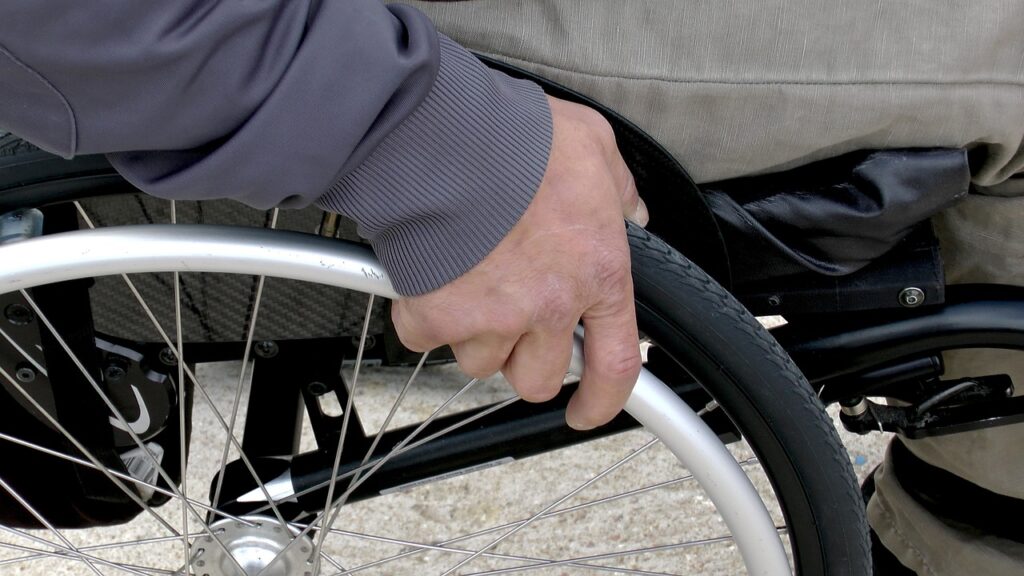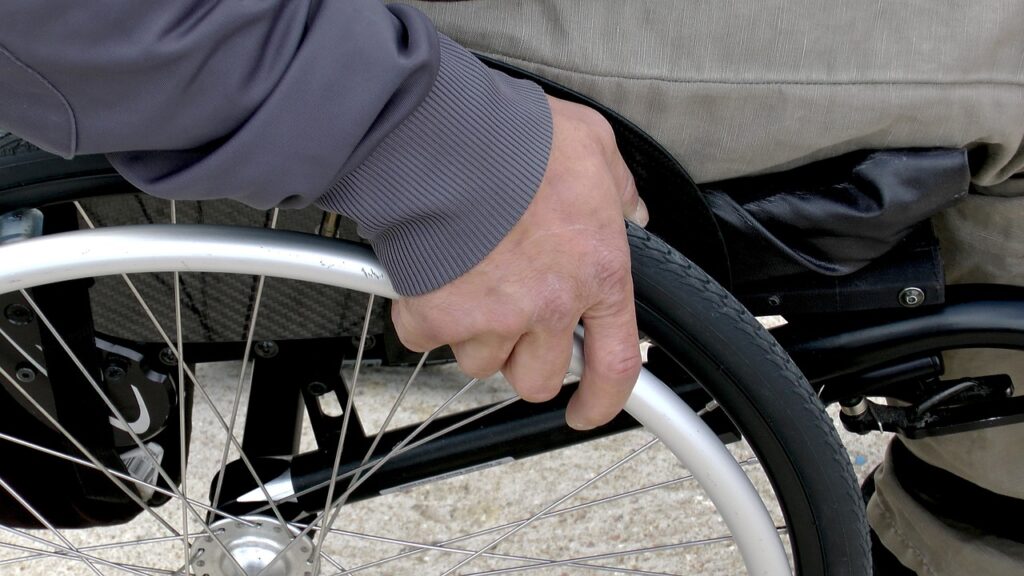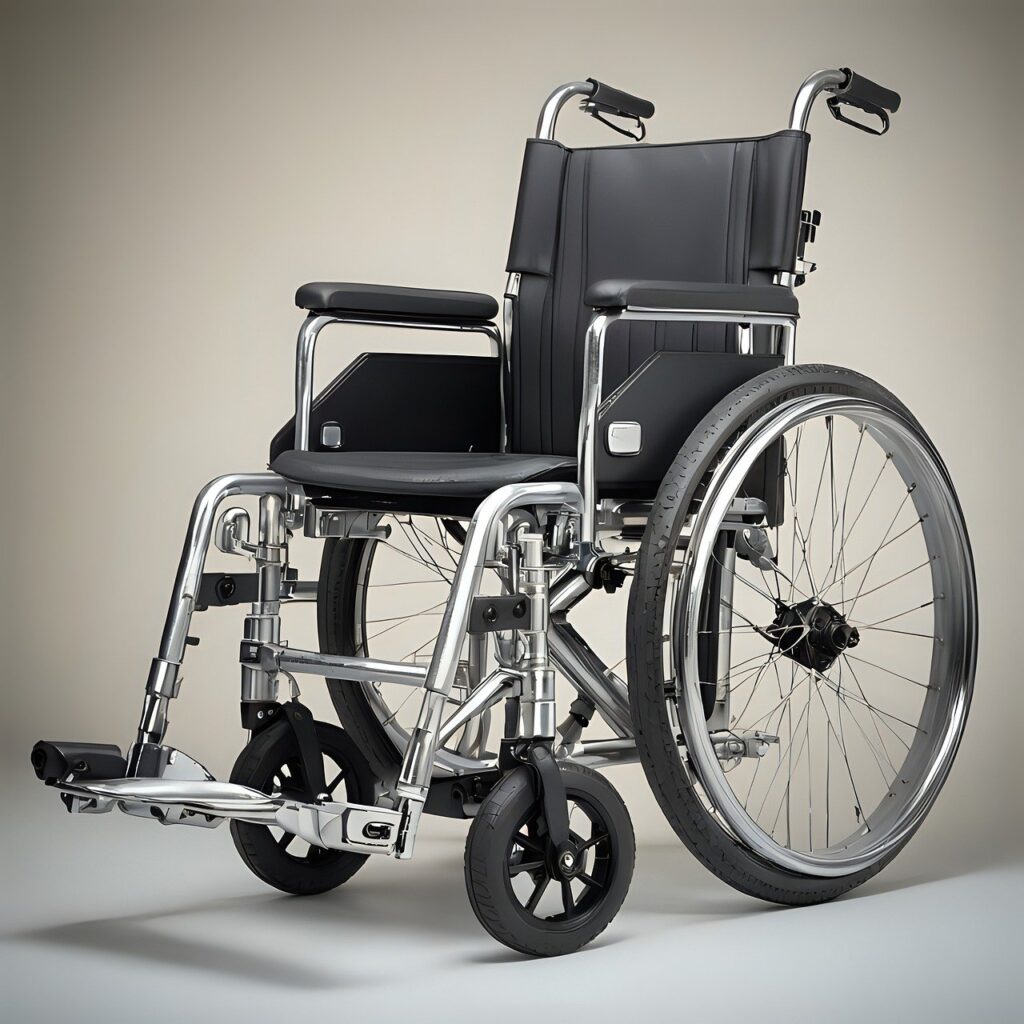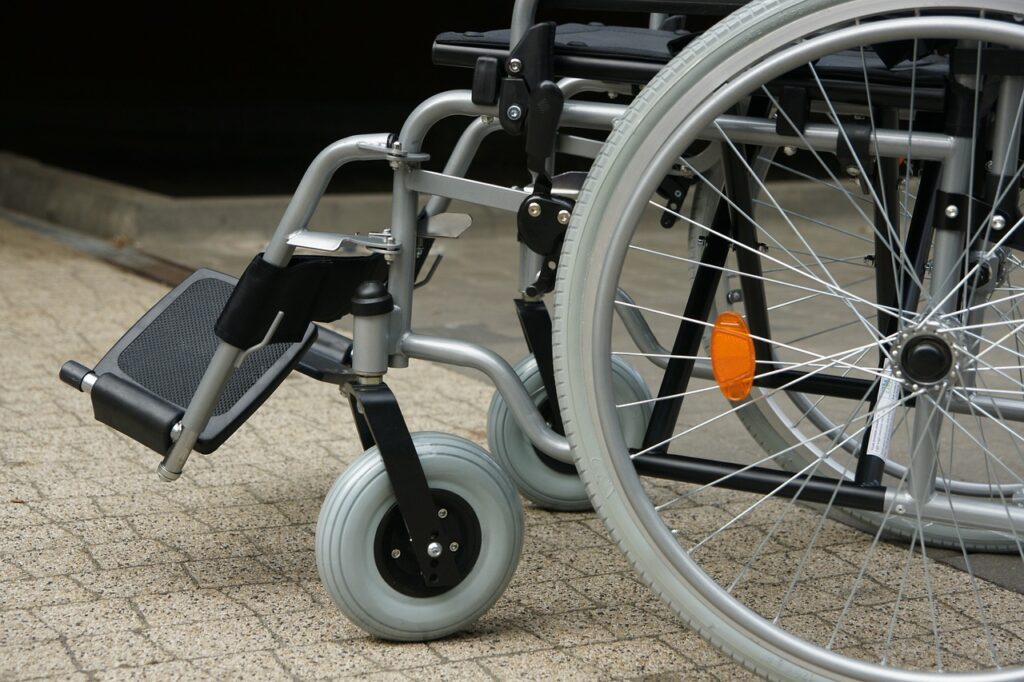In healthcare, wheelchairs represent more than just a means of mobility; they are a lifeline for millions of individuals, granting them independence, dignity, and the ability to participate fully in life. For patients with spinal cord injuries, neurological disorders, or those recovering from surgery, wheelchairs serve as essential medical devices that promote rehabilitation and improve quality of life.
The evolution of wheelchairs—from basic manual models to modern powered versions equipped with smart technology—has transformed healthcare by enabling patients to regain autonomy. These devices also play a critical role in preventing complications such as pressure sores and muscle atrophy by offering proper seating and posture support.

However, the impact of wheelchairs extends beyond physical health. They offer psychological benefits by helping individuals maintain their social interactions, engage in work, and participate in daily activities. The growing demand for more innovative, affordable, and accessible wheelchair designs reflects a broader movement towards inclusivity in healthcare.
This blog explores the multifaceted role of wheelchairs in healthcare, from assisting patients with specific medical conditions to addressing accessibility challenges in hospitals and public spaces. It also highlights the ongoing need for advocacy and innovation in ensuring that wheelchairs continue to empower users across the globe.

The Impact of Wheelchairs on Specific Medical Conditions
Wheelchairs are not just useful for general mobility; they are indispensable in the management of a variety of specific medical conditions. Understanding how wheelchairs assist patients with different health issues can help illustrate their vast role in healthcare.
- Spinal Cord Injuries
Patients with spinal cord injuries (SCI) are among the primary users of wheelchairs, especially those with complete or partial paralysis. For individuals with high-level spinal injuries, powered wheelchairs that provide postural support and facilitate movement with minimal physical effort are crucial. In these cases, the wheelchair acts as both a mobility tool and a posture correction device, helping to prevent secondary complications like pressure sores, muscle atrophy, and respiratory issues.
Rehabilitation for SCI patients often involves learning how to use a wheelchair effectively to regain as much independence as possible. Occupational and physical therapists play a vital role in this process, teaching patients how to transfer in and out of their wheelchair safely, how to navigate different terrains, and how to maintain the chair for optimal use. - Multiple Sclerosis
Multiple sclerosis (MS) is a degenerative neurological condition that affects movement, balance, and muscle strength. As the disease progresses, patients may require a wheelchair to manage their mobility needs. Wheelchairs, particularly powered models, are vital for MS patients experiencing fatigue and muscle weakness, as they conserve energy and provide stability. Additionally, standing wheelchairs may offer therapeutic benefits for MS patients by improving circulation, joint mobility, and muscle tone.
The availability of adaptive technology in wheelchairs, such as adjustable seating positions, is critical for MS patients who may need to change their posture frequently throughout the day to reduce discomfort and prevent muscle stiffness. - Cerebral Palsy
Cerebral palsy (CP) is a neurological disorder that affects movement, muscle tone, and posture, often requiring the use of a wheelchair for mobility. Pediatric wheelchairs designed for children with CP include customized seating systems to provide the necessary support for postural control and comfort. Many pediatric wheelchairs also come with attachments like trays and communication devices to assist children in school or therapy settings.
Wheelchairs for individuals with CP often incorporate specialized positioning systems to minimize the risk of scoliosis, joint dislocations, or contractures, conditions that are common in patients with severe forms of the disorder. These wheelchairs also facilitate the patient’s integration into social and educational environments, ensuring that they have access to opportunities for engagement and learning. - Amputations
Patients who have undergone lower-limb amputations, particularly those who are not immediate candidates for prosthetic limbs, often rely on wheelchairs for their mobility. The choice between a manual or powered wheelchair will depend on the patient’s upper body strength, fitness level, and overall health condition.
Wheelchairs for amputees often have an adjusted center of gravity to provide greater stability and prevent tipping. These wheelchairs may also be fitted with pressure-relieving cushions to reduce the risk of skin breakdown, especially if the patient is immobile for extended periods. - Obesity and Bariatric Needs
Bariatric wheelchairs are designed for patients who are obese or have a higher-than-average body mass index (BMI). These wheelchairs are built to support higher weight limits, typically up to 700 pounds or more, and are constructed from heavy-duty materials for durability. Obesity-related conditions such as diabetes, heart disease, and arthritis often reduce mobility, making wheelchairs necessary for daily activities.
Bariatric wheelchairs are often wider than standard models and feature reinforced cross-braces, larger wheels, and padded seating to ensure comfort and support. These wheelchairs also play a role in patient care by allowing healthcare providers to transfer and transport patients safely, thereby reducing the risk of injury for both patients and caregivers.

Wheelchair Accessibility: A Healthcare Imperative
While wheelchairs are invaluable, they cannot achieve their full potential without adequate infrastructure and accessibility in healthcare settings. Accessibility is an ongoing challenge that affects healthcare facilities worldwide, impacting both patients and medical staff.
- Hospital Accessibility
One of the most critical aspects of wheelchair accessibility is ensuring that hospitals and clinics are designed to accommodate wheelchair users. This includes having wide hallways, automatic doors, ramps, and accessible restrooms. Hospitals must also ensure that examination tables, diagnostic machines, and patient care equipment are wheelchair-friendly, enabling patients to access necessary treatments and tests without barriers.
Medical facilities that lack adequate accessibility infrastructure not only hinder patient care but also increase the risk of injury to patients and staff during transfers. Comprehensive accessibility standards must be implemented and regularly evaluated to ensure that hospitals remain wheelchair-friendly. - Home Accessibility for Wheelchair Users
For individuals who rely on wheelchairs, their homes must also be adapted to their mobility needs. Modifications such as installing ramps, widening doorways, lowering countertops, and fitting stairlifts can transform a standard home into a more accessible space. These modifications are often recommended by occupational therapists as part of a patient’s discharge plan from the hospital.
Ensuring home accessibility allows patients to lead more independent lives and reduces the likelihood of falls or accidents that could require readmission to healthcare facilities. - Public Space Accessibility
Wheelchair users must navigate not only healthcare facilities but also public spaces like streets, shopping centers, and recreational areas. Accessibility in public spaces is vital for enabling wheelchair users to engage in social activities, work, and education. Universal design principles, such as curb cuts, wheelchair-friendly public transportation, and accessible parking, are essential to making communities more inclusive.
In many countries, legal frameworks such as the Americans with Disabilities Act (ADA) in the U.S. and similar laws in other nations mandate accessibility in public and private spaces. However, enforcement remains uneven, and many regions still lack the necessary infrastructure, particularly in low-income areas or developing nations.
The Role of Caregivers in Wheelchair Use
While many wheelchair users are independent, others require assistance from caregivers. Caregivers play an essential role in helping individuals navigate their daily lives, especially in healthcare settings where patients may need help with transfers, positioning, and personal care.
- Assisting with Transfers
Caregivers are often responsible for helping patients transfer in and out of their wheelchairs. Safe transfer techniques are critical to prevent injuries to both the patient and the caregiver. This is particularly important in hospital settings, where improper transfer techniques can lead to falls, muscle strains, and other complications.
Training caregivers in proper lifting techniques, the use of transfer devices like hoists, and how to assist patients in using their wheelchairs effectively is crucial to patient safety and comfort. - Maintenance of Wheelchairs
Caregivers also have a role in ensuring that wheelchairs are properly maintained. Regular maintenance is essential to the safe operation of a wheelchair. Caregivers should be trained to check for common issues such as worn-out tires, loose screws, and malfunctioning brakes. In some cases, they may need to clean and sanitize the wheelchair to prevent infections, especially in healthcare environments. - Emotional and Psychological Support
The emotional well-being of wheelchair users is often overlooked, but it is a significant aspect of their overall health. Caregivers provide not only physical support but also emotional encouragement. Many wheelchair users face mental health challenges, such as depression or anxiety, due to their mobility limitations. A compassionate caregiver can make a profound difference by offering emotional support and encouraging patients to remain active and engaged.
Caregivers who foster independence in wheelchair users—by encouraging them to navigate their surroundings or handle small tasks—contribute to improving the patient’s confidence and sense of autonomy.

Advocacy for Wheelchair Users in Healthcare
Advocacy is essential to ensure that the rights and needs of wheelchair users are recognized and met within the healthcare system. There are several avenues through which advocacy can take place, from grassroots campaigns to policy-level interventions.
- Advocacy Organizations
Several global and national organizations advocate for the rights of people with disabilities, including those who use wheelchairs. These organizations often work to promote accessibility, fight for funding for mobility aids, and ensure that public spaces, including healthcare facilities, are wheelchair-friendly.
Examples include the World Health Organization’s Global Cooperation on Assistive Technology (GATE) initiative, which seeks to improve access to wheelchairs and other assistive devices, and local organizations like the United Spinal Association in the U.S. - Legal Frameworks and Policies
In many countries, legal protections are in place to ensure that wheelchair users have access to the healthcare they need. Laws such as the Americans with Disabilities Act (ADA) in the United States and the United Nations Convention on the Rights of Persons with Disabilities (UNCRPD) at the global level mandate that public and private institutions, including healthcare providers, accommodate individuals with mobility challenges.
However, legal protections are only as effective as their enforcement. Advocacy efforts must continue to push for the implementation of these laws, ensuring that wheelchair users have equal access to healthcare, employment, and education. - Research and Development
Advocacy plays a crucial role in driving research and development for improved wheelchair technologies, helping to shape a future where mobility solutions are more accessible and effective. Through continued advocacy, organizations raise awareness about the limitations of current wheelchair designs and push for innovations that make these devices lighter, more efficient, and affordable for a wider range of users.
By collaborating with engineers, medical professionals, and researchers, advocacy groups foster an environment of creativity and problem-solving. This collaboration often leads to the development of advanced materials, better ergonomic designs, and even smart technologies that can adapt to the unique needs of individual users. The goal is to not only enhance mobility but also to significantly improve the overall quality of life for wheelchair users, enabling them to navigate different environments with ease and confidence.
Moreover, advocacy efforts help secure funding for such research, ensuring that wheelchair technology evolves to meet the needs of an aging population and individuals with complex medical conditions.
Way ahead
The wheelchair, a simple yet transformative device, plays an indispensable role in healthcare. It not only provides mobility but also improves the quality of life for millions of people worldwide. From aiding in rehabilitation to enhancing patient independence, the importance of wheelchairs in healthcare cannot be overstated.
However, challenges such as accessibility, affordability, and social stigma remain. These issues call for concerted efforts from healthcare providers, governments, advocacy organizations, and communities to create a more inclusive environment for wheelchair users. By continuing to innovate and advocate, we can ensure that everyone, regardless of their mobility challenges, has access to the healthcare and support they need to live a fulfilling life.
In a future where accessibility is no longer an obstacle and wheelchairs continue to evolve, healthcare systems will be better equipped to meet the needs of all patients, ensuring that mobility, independence, and dignity are never compromised.






